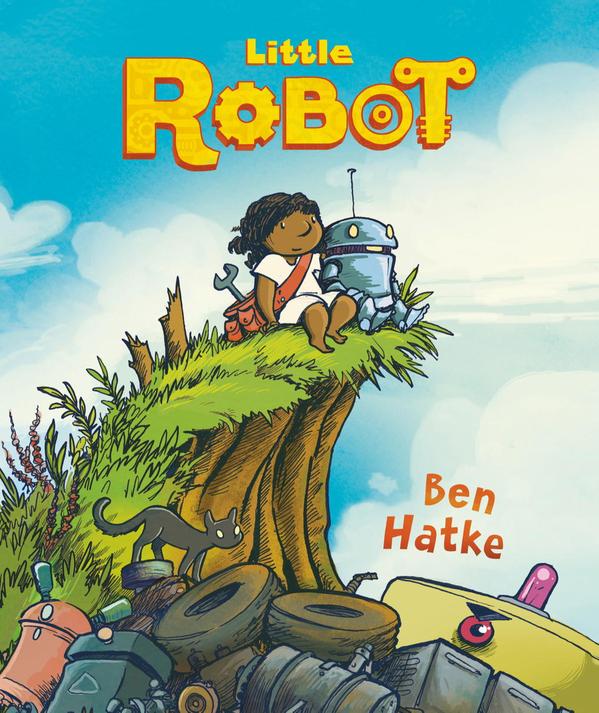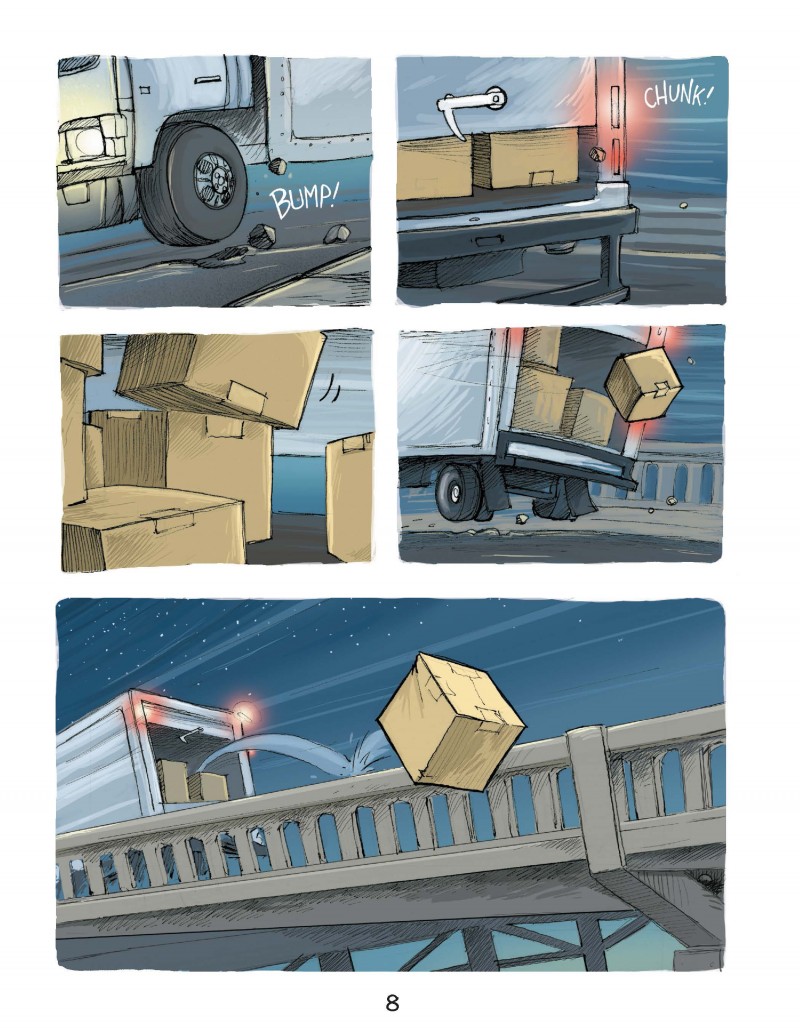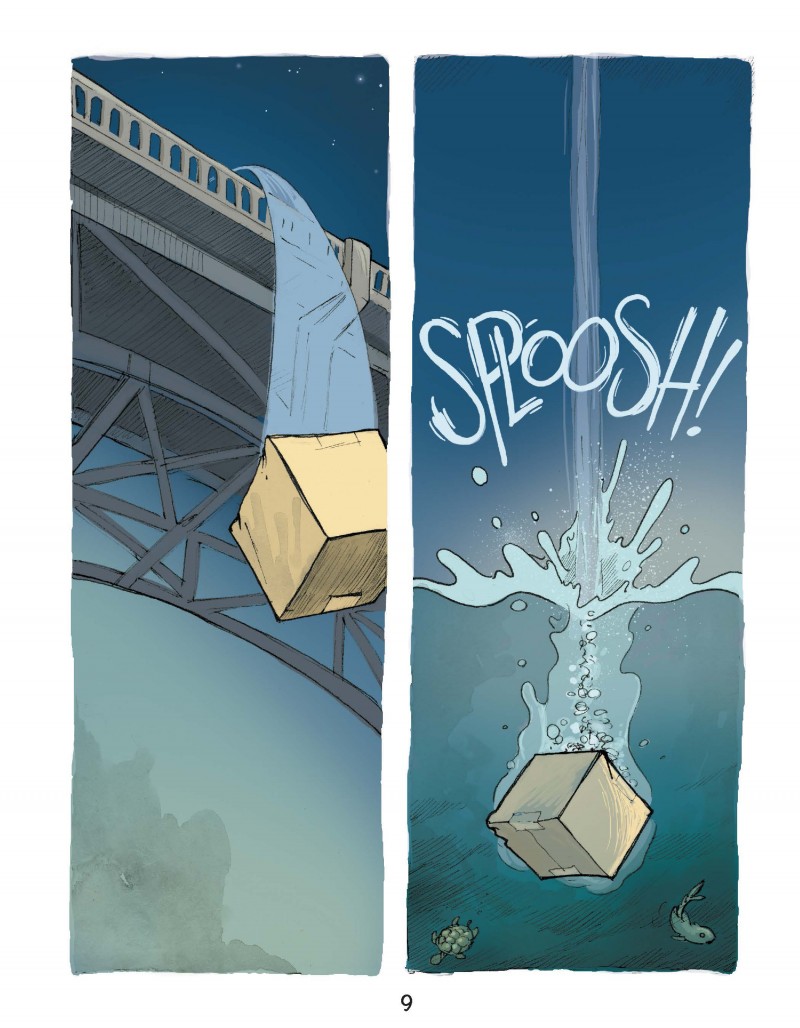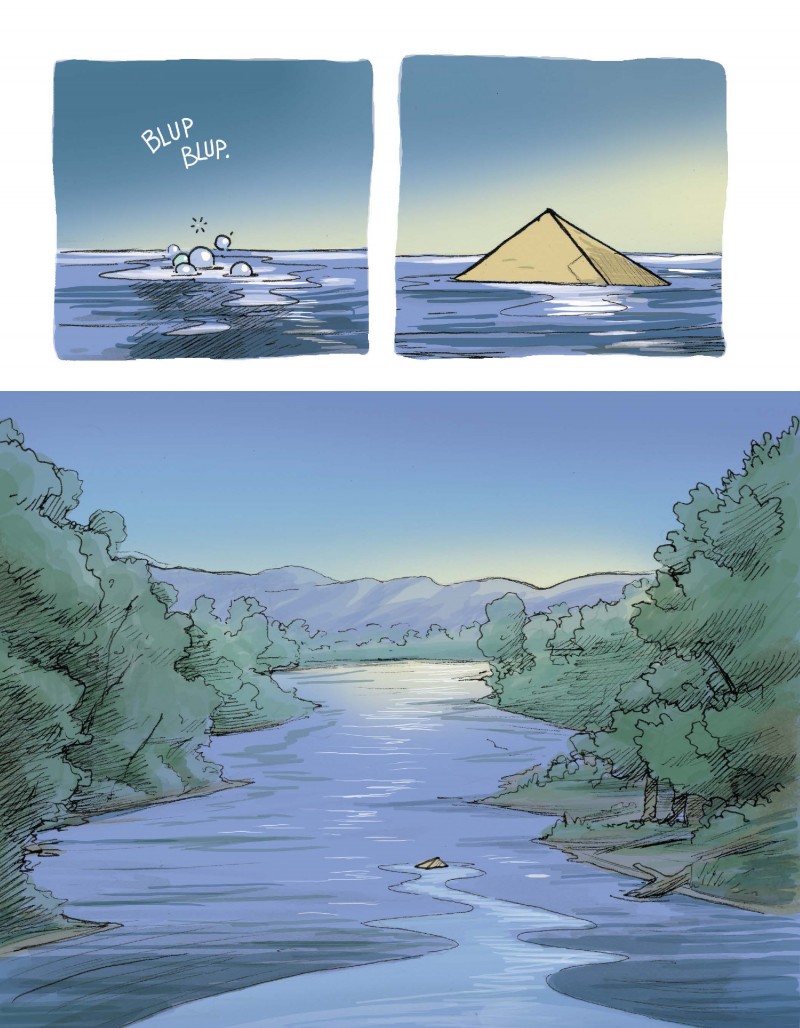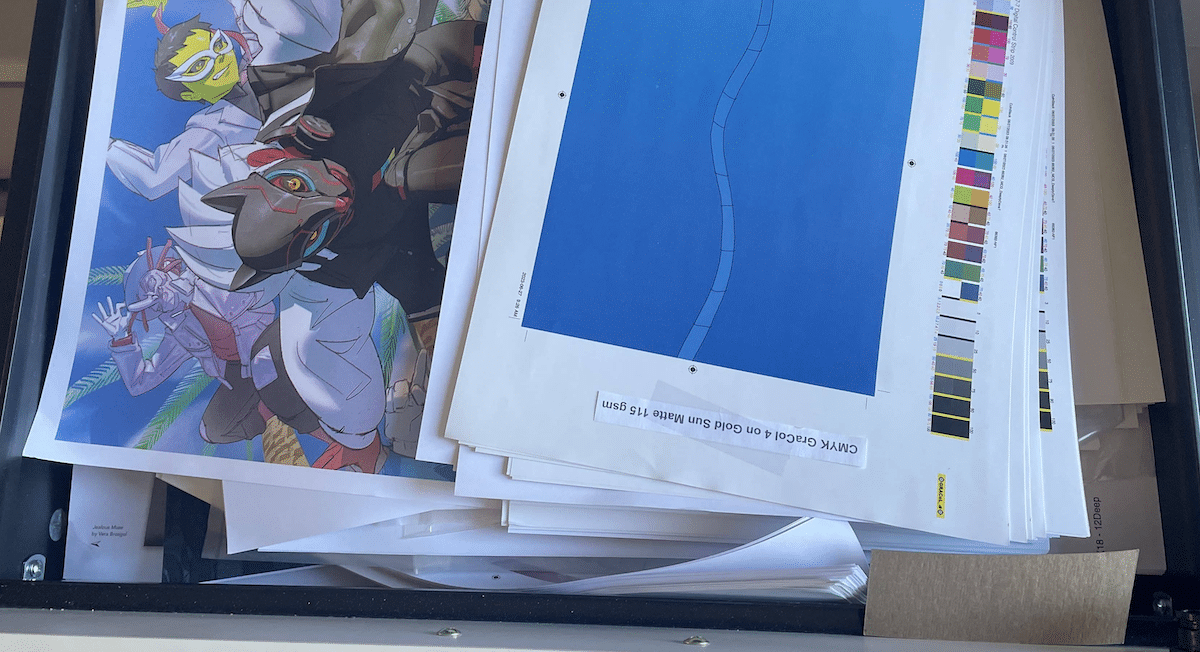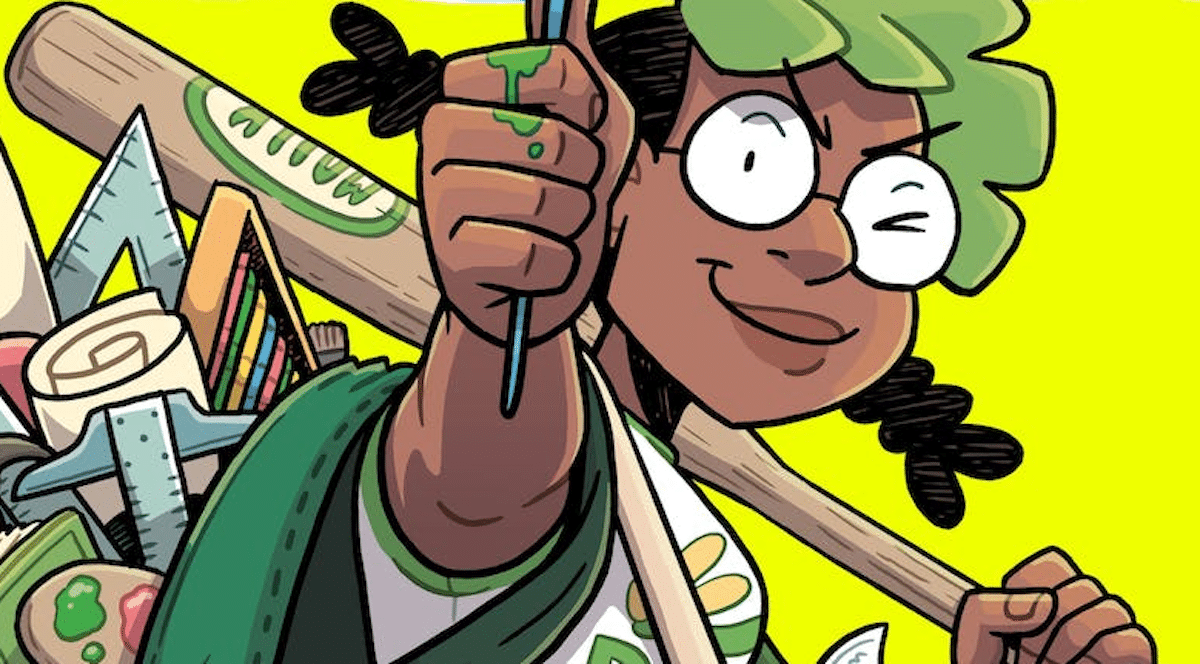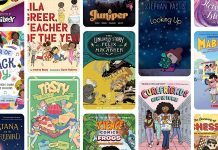Let’s start with the easiest question perhaps, tell us about the origins of the project. At what point did you decide this would be your follow-up to last year’s two-fer of your latest Zita The Space Girl title and Julia’s House for Lost Creatures?
I’d been working on a series of very short, newspaper strip style webcomics featuring this little robot character. It started out as a fun way for me to let off a little creative steam and just play a bit, artistically. People seemed to really respond to the Little Robot strips though and slowly and surely I started playing with the idea of a longer narrative about this little mechanical fellow.
Were there any influencers in particular for your story and its structure?
Hmm… I feel like a lot of my long time influences were at play here (Henson, Ghibli, Sendak, etc) and that having the robot character develop through a slightly different medium (5-8 panel strips) gave me some freedom. This story is more meandering that much of what I’ve done before and even though there is some action it mainly focuses on a single relationship. Though I’m sure there’s some classic robot story stuff in there: some Wall-E and some Johnny 5.
The art throughout is incredibly lush, and it put me to mind of many a fine animated feature I’d seen. I can only imagine the amount time spent on each panel given how lovingly rendered each one is. What was the timeline from conception to finished product?
Gosh, that’s a tough one for me to put my finger on…. This book had a nice long gestation before I ever sat down to start drawing pages. It felt like I spent just the right amount of time writing and rewriting the outline and a nice amount of time just feeding the sketchbook. I really have come to believe in doing as much developmental work as possible before you start making pages. And do I count the two years of comic strips in which the Little Robot’s personality and body language were developing?
I believe once I started actually producing pages it took about 5 months to draw and color. It seems short, but being able to pull locations from the surrounding area and poses with the help of my kids was a big help and ended up making things go a little faster.
How did this working method compare to your previous body of work?
The format was a little larger than the Zita books and the page count just a bit shorter. With the larger page size I ended up doing a lot more ink wash on the pages and adding a bit of depth in that way. This book is also set, very consciously, in my own general area. Definitely all within a few miles radius. So for this book (unlike, say Zita the Spacegirl) I was able to take walks with my camera and sketchbook and sketch some of the locations right from life. There’s an old broken down jeep in the book that I literally sat in front of and drew and later scanned and placed that same drawing into the book. It was all very rewarding and I think it added something to the sense of place. At least I hope!
One thing that immediately struck me is just how evocative of mood your work here is, particularly when it works with so little dialogue. Is it challenging to convey story with so much non-verbal communication?
The opposite, really. One of the things I like best is telling as much as I can through gesture and image!
The choice of not naming your characters outright, your protagonist doesn’t even have a signature noise that she could be referred to like the robots, is of interest to me. Was there any particular goal in mind with this decision? Perhaps to greater allow for reader stand-in?
I definitely thought of allowing the readers to more readily identify themselves with the Little Human, but also I’d drawn about 30 strips without naming the Little Robot. When it came time to do the book no name I thought of for the robot seemed to stick, so I wanted the robot and the girl to be on the same level in that sense.
Each robot that we’re introduced to is very unique in design, what’s your thought process when pulling these little inventions together? Was there ever a point where you had to go back to the drawing board on any of them to adjust an appearance?
Some of them had appeared in the strip, some I pulled from my sketchbooks. I have so many robots in my sketchbooks it’s not really a matter of redesigning bots so much as choosing the right ones from the many I’ve drawn.
Do you have a favorite design from this set?
I do! It’s the dark green box-y one with the sort of single light bulb eye on top.
Authenticity of the child-like voice would seem to me, as an old and tired fellow, one of the more difficult aspects of the job. How much do you pull from your everyday interaction with your own family for your lead protagonists?
This is tough to answer! I think I look for the feelings and thoughts and emotions that are authentic to both myself AND my kids. Children are little people after all and what they lack is experience and not depth of emotion.
And I do watch and interact with my kids quite a bit and it absolutely informs my work. I’m lucky to have five very distinct young personalities in my house to draw from.
On that same note, given your books’ initially intended audience, do you ever find yourself running stories past them for input?
I used to run stories past them for input but that has sort of flipped around to the point where I don’t have to ask. The girls watch and keep up with my projects. They see the stories develop on my desk. They ask what is going on just about every day in whatever project I’m working on and they are usually pretty forthright and insightful in giving their opinions.
Is there a central message you hope readers take away from Little Robot?
It’s more a meditation on friendship that a message about friendship, so I hope readers just find something to connect to.
The great majority of your published output and come by way of First Second, what is it about your relationship with the publisher that works so well?
Ha! Well . . . I have an editor that I really like! And really at this point many of the relationships with the folks at First Second are starting to become long-standing relationships, and so as long as I’m doing books that fit in with the kinds of books they publish it’s really my best choice.
What’s next on your plate after this? Is there another book in the pipeline?
There are several books in the pipeline! The next book to release, which is finished, is a picture book called Nobody Likes a Goblin. After that will come a graphic novel called Mighty Jack. It’s a two-book story and I just turned in book one… Then comes the second volume of Mighty Jack and after that a chapter book called Miracle Molly. It’s a busy time for me…
Given its webstrip origins, is it possible we may see more Little Robot offerings on your blog? I’d love to see a continuation of this story, particularly with all the new friends you have to play with.
I’m not sure! I do love the Little Robot strips and I recently did a new one for Free Comic Book Day. I don’t know if this particular story will continue, but I don’t think we’ve seen the last of this little mechanical character …or the Little Human.


